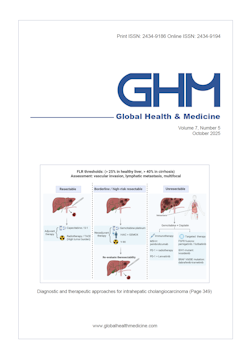Global Health & Medicine 2022;4(1):1-8.
AIDS at 40th: The progress of HIV treatment in Japan
Oka S
Forty years have passed since the first five AIDS cases in Los Angeles were reported in 1981. Looking back at the history, these 40 years could be divided into 3 phases. During the first 15 years, when there was little efficacious therapy against HIV, clinical research was directed to develop diagnosis and treatment for opportunistic infections, mainly Pneumocystis jirovecii pneumonia. When combination antiretroviral therapy (cART) became available in 1996, taking cART had been troublesome to most patients following 10 years because some of them had severe side effects, diet restrictions, high pill burdens, drug interactions, etc. It was not easy for patients to keep high adherence and, therefore, the virus easily obtained drug resistance. Although the prognosis has been dramatically improved, patients had been still living with hard times during the second phase. Along with advancement of antiretroviral drugs that have allowed simple treatment possible, their life expectancy has further improved and is reaching almost nearly the general population in the following 15 years. However, some patients have recently faced an additional load to treat life-related comorbidities and non-AIDS defining malignancies. The problem is that these diseases start to occur in the 40s- or 50s-year-old generations and that means HIV-infected persons are suffering from pre-mature aging. AIDS no longer signifies death. However, we still have a lot to improve for their quality of life.
DOI: 10.35772/ghm.2021.01120







